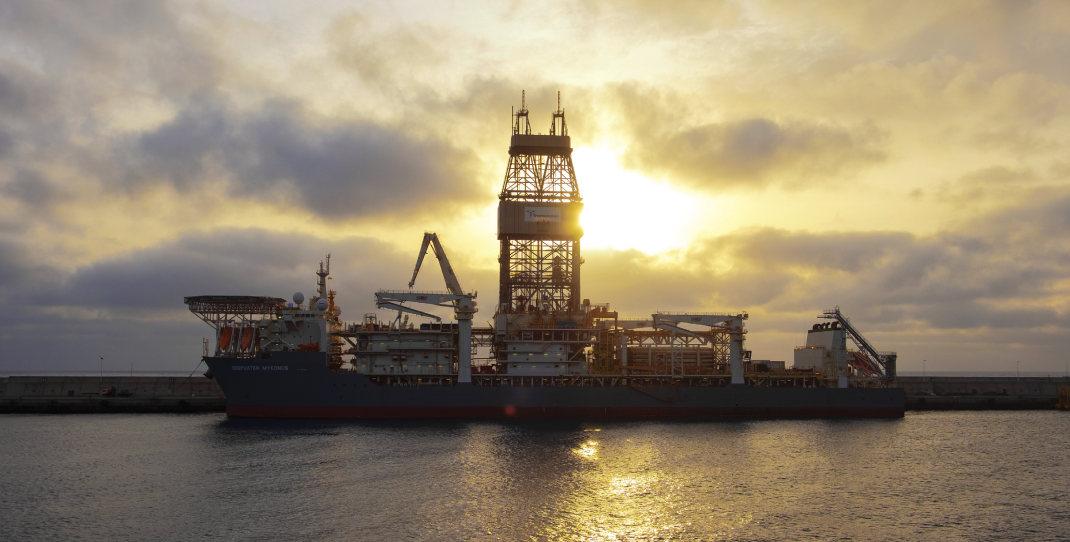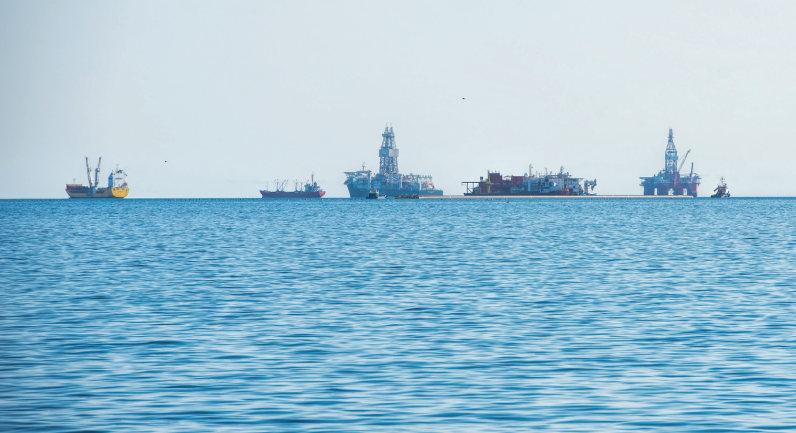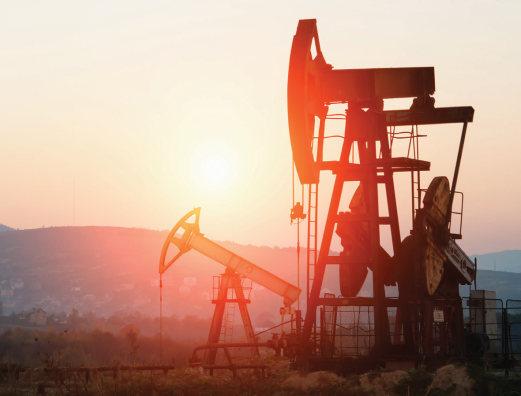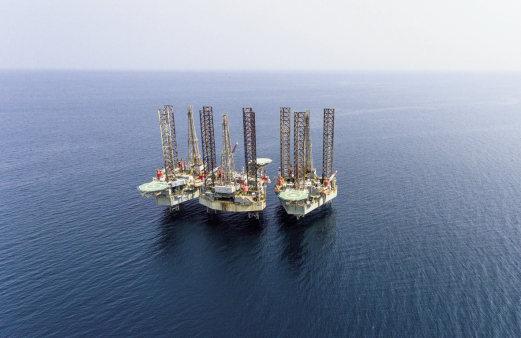
14 minute read
Fibre optics
HOW TO DYNAMICALLY ACT UPON DOWNHOLE INSIGHTS?
In-well fibre optic technology can lead to production improvements in the order of several hundred million dollars per asset.
PRODUCTION BENEFITS OF hundreds of millions of dollars per asset can be realised through the use of in-well fibre optic technology when the vast amounts of data produced are managed and translated rapidly into actionable insights.
This is according to a white paper from LYTT, specialist data analytics solutions provider for industrial assets.
Prad Thiruvenkatanathan, cofounder and chief product and technology officer, LYTT, said, “Oil and gas companies have a huge data opportunity. On the one hand, they can continue as they have been, basing multimillion-dollar production decisions on little to no information, or make the choice to invest in the real-time insights they need.”
While the oil and gas industry started to install fibre optic cables in hydrocarbon wells three decades ago, these networks are substantially underused despite their potential to lead to significant production improvements with the emergence of distributed acoustic sensing (DAS). Companies are wary of DAS technology because of the vast amount of data it produces, and the capacity and skillset required to turn this data into something that can immediately add value to operations.
As a result, operators have become accustomed to making multi-million-dollar operational decisions based on data collected intermittently and that only offers a snapshot of well performance.
Optimising profitability will be vital in 2020 and beyond Lytt provides a solution to address the data volume issues. By leveraging fibre optic cables working as downhole sensors, insights are generated that solve fundamental challenges to production in hydrocarbon wells such as inflow phase and flow profiling; outflow profiling; sand identification and well integrity analysis. Using hybrid analytics, this data can provide a real-time view of changes in production, enabling operators to act upon
More than ever, the industry needs to work collaboratively and empower operators to manage risks with proven technologies.
the downhole insights dynamically.
As the oil and gas industry continues to face substantial challenges in the form of fluctuating oil prices driven by economic shocks and geopolitical battles and increasing pressure on governments and corporates to cut their environmental impact, optimising profitability and efficiency will be vital throughout 2020 and beyond.
In the white paper “Raising Recovery Rates in Real-Time,” LYTT demonstrates how hybrid analytics enable oil and gas firms to profit from underused fibre optic networks and boost efficiency and well production in real-time.
The white paper has further highlighted three challenges producers face when dealing with legacy or remediated assets. These include sand detection, well integrity and flow profiling. It also explains how hybrid analytics can help owners and operators tackle these issues.
“In this time of uncertainty, the industry needs to work collaboratively and empower operators to proactively manage risks with proven technologies. We have already seen results of several hundred million dollars across a group of assets by adding production, managing integrity and increasing field recovery,” stated Thiruvenkatanathan.
Thiruvenkatanathan continued, “There is no question that oil and gas will remain an important part of the global economy for many years to come. But companies need to ensure their operations are as sustainable as possible by maximising the production from existing wells and reducing the need for further drilling or infrastructure.”
IATF 2021 TO BOOST TRADE AND INVESTMENT
In 2021, IATF will focus on the African Continental Free Trade Area (AfCFTA) – a single market for goods and services across 55 countries, aimed at boosting trade and investment.
THE OIL AND gas industry has been one of the hardest hit sectors by the COVID19 pandemic, with reduced demand and plummeting prices, leaving many of the industry’s players reeling. The price of a barrel of Bonny Light was trading just above US$67 at the beginning of the year, plummeting to below US$15 on some days during April and was trading at around US$44 in late July.
The Environment Investigation Agency (EIA) estimated that there was a 21 mmbbl per day oversupply in global oil markets during April, but it had returned to inventory drawdown by June. As with commodities, price, supply and demand volatility in the O&G industry is nothing new and tends to be cyclical.
In Africa, O&G remains a huge employer and big business with rigs, exploration, production, refineries, storage terminals, port facilities, pipes, oil tankers and more all forming part of the direct mix. Also, the tentacles and supply chains of the African O&G industry embrace and collaborate with many other sectors: wholesale and retail; IT equipment and services; construction; machinery and equipment; maintenance; hotels; restaurants; legal and accounting services; and employment agencies amongst others. All these vastly expand the O&G impact meaning that sales, purchases, services, investments
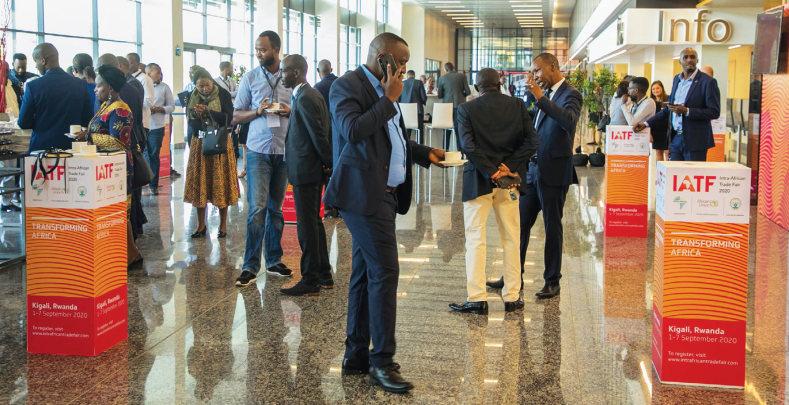
In light of the COVID-19 pandemic, the event is rescheduled to 2021 from 1-7 September 2020. and contracts abound. The advent of the African Continental Free Trade Area (AfCFTA) and improved market information, coupled with a move towards diversifying supply chains, will make it much easier to leverage the entire African continent to resource required goods and services.
Bringing together buyers, sellers and service providers in 2021 To this end, Afreximbank and the African Union have organised the Intra African Trade Fair 2021. The event brings together buyers, sellers and service providers from every country in Africa and many from beyond. The visitors will be able to meet and engage with new contacts, find the reliable supplier and showcase goods or services to the O&G industry.
The IATF2021 is being held in Kigali, Rwanda, from 6-12 September 2021. It provides a unique business platform enabling buyers and sellers to network, interact and explore business, trade and investment opportunities. It also hosts a conference with top-level speakers on all matters relating to business trade and investments. For those that can’t physically attend there is also a year-round Virtual Trade Fair negating the need for travel and hotels. IATF2021 is expected to result in more than US$40bn of trade and investment deals bring concluded, with over 10,000 delegates attending and over 1,100 exhibitors displaying their goods and services.
People who are interested to visit and benefit from the trade and investment boosts from AfCFTA, can put IATF2021 into Outlook, iCal or Google calendar now.
NEW HIGH-PERFORMANCE PRODUCTION CHOKE FROM LANCASTER FLOW AUTOMATION
Lancaster Flow Automation is continually advancing its cutting-edge solutions to accommodate the oil and gas industry’s requirements to operate at increasing pressures while delivering outstanding efficiency and reliability.
LANCASTER FLOW AUTOMATION, which has designed and manufactured high-performance production chokes for more than 20 years, has released a new product called the Vector Inline Choke, in line with its commitment to constant innovation.
Lancaster Flow Automation continually advances its engineering to accommodate the oil and gas industry’s requirements to operate at increasing pressures while delivering outstanding efficiency and reliability. Engineered using 3D Modelling and fluid dynamics, the Vector Inline Choke has been manufactured for optimal performance in challenging liquid and gas applications. The new choke significantly increases efficiency
The Vector Inline Choke.
and sets new standards of durability. Perhaps the greatest advance in the product is its revolutionary flow system called the Guide Vane. This remarkable piece of engineering directs the flow of fluids directly
Image Credit: Lancaster FLow Automation
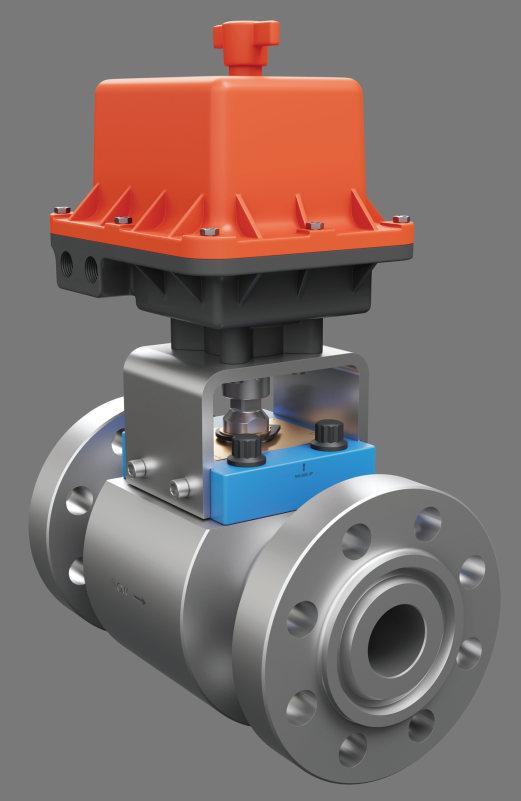
into the opening of the trim, providing a lower erosion rate and thereby increasing the longevity of the choke. Additionally, Lancaster Flow’s proprietary design of the trim disc openings allows for finer control and higher differential pressure drops.
To generate even further cost savings, the Vector Inline Choke has a Class V leakage rating, meaning the choke will stay in service for longer and require less maintenance. Furthermore, it has been designed so that maintenance may be carried out while the choke is still in service. Like the company’s other products, the Vector Inline Choke requires extremely low operating torque; there is no need for large hand wheels or additional personnel. Designed and tested to API 6A PR2 standards, it may be operated manually or with a pneumatic or electric powered actuator and depending on the choke’s specific application, wear sleeves are available in stainless steel, solid tungsten and stellite.
The Lancaster Flow Vector Inline Choke is available now and will be manufactured at the company’s headquarters in Houston, Texas and Samarinda, Indonesia. Maintenance for the choke will be fully supported worldwide, including in the Gulf via its service facility in Abu Dhabi. The Lancaster Flow Vector Inline Choke has patent pending in the USA.
For further information, email info@lancasterflow.com or melvinsng@sagapce.com
Thomas Siebel, author, chairman and CEO of C3.ai, spoke at a Gastech Virtual Summit Tech Talk on the factors driving the digital transformation of the oil and gas industry, and the importance of digital technologies in surviving the impact of COVID-19.
SIEBEL BEGAN BY saying we are undergoing a “mass extinction event”, with predictions that 40% of the companies on the planet today will not survive the next decade. Companies with “new DNA”, such as Amazon, Uber, Tesla and Google are filling the vacuum.
“When we get to this issue of corporate mass extinction and digital transformation, predictions are that 70% of the existing companies today will go digital and 21% will succeed. The rest will go out of business,” he said. “This digital transformation process has clearly been accelerated in the post-COVID economy.”
Digital transformation has now come to the top of the agenda for the CEO and board directors, he continued.
“What are the vectors driving the information technology industry in the 21st century? These would include elastic cloud computing, like AWS, and Azure, and Google Cloud. The concept of big data means we’re able today to deal with, store and manipulate data sets that were previously unmanageable. With this phenomenon of the Internet of Things, we are sensoring the value chains, travel, transportation, oil and gas, healthcare utilities, the power grid, so that all the devices in the value chain are becoming remotely machine
Oil and gas companies need to embrace digital transformation to survive.
addressable.....today we’ve probably sensored in an order of 50 billion devices around the world. Across all value chains, this is accelerating.” The confluence of technology trends such as cloud computing, big data and the Internet of Things is enabling us to solve problems using artificial intelligence that were previously unsolvable.
“Unless we adopt these technologies, we will cease to exist. You have the opportunity to either reinvent yourself or slowly go out of business,” he said.
Through its partnership with Baker Hughes, Baker Hughes c3.ai, the company is bringing together a set of AI applications that address the entire value chain in oil and gas.
“ In a typical deployment, we will be aggregating massive amounts of data from enterprise information systems, extraprise information systems, whether might that be the weather, terrain, social media, equity prices, commodity prices, and the aggregated data will also be coming from a very large constellation in a sensor network. We aggregate those data into a unified federated image. These data might be hundreds of petabytes of data. We process this data at the rate that it arrives, say, 60 or 90-hertz cycles, so processing millions of transactions per second, typically in the elastic cloud, but sometimes on-prem, and then we bring to market a family of AI applications that address network, inventory and yield

optimisation, reliability, predictive maintenance, energy, water and emissions management.”
The company’s largest use case is Royal Dutch Shell. “We're doing everything from AI-based predictive maintenance for offshore oil rigs to production optimisation in wells, process optimisation, refining, AI-based predictive maintenance for 550,000 valves. In that application, we're managing two million machine learning models in real-time.
“It is very large scale, and we are partnered with Baker Hughes and Azure to reinvent Shell in the 21st-century economy to produce lower cost and safer energy, more renewable energy, and digitally transform the company.”
DO YOUR FACILITIES HAVE A 'PROLONGED' LIFESPAN?
Despite the many huge advances in recent decades, there is no ‘one size fits all’ when it comes to coatings in the oil and gas industry. Martin Clark reports.
SPECIALIST PAINTS AND coatings provide a barrier between critical equipment and the elements, ultimately prolonging the lifespan of rigs, pipelines, wells and other essential facilities.
Major players in this niche include the likes of Jotun, Akzo Nobel and Bredero Shaw.
The global anti-corrosion coatings market is anticipated to reach US$39bn by 2027, according to Grand View Research, growing at around 4.6 per cent annually.
According to it, the oil and gas industry — which accounts for over a third of this overall market — will continue to drive demand, in part, due to the presence of sulphur in crude oil, which causes corrosion in pipelines, vessels, and containers.
“These coatings act as a barrier to prevent the interaction between the corrosive materials, compounds, chemicals from the
Specialist paints and coatings solutions prolong the lifespan of rigs, pipelines, wells and other essential facilities.”
The industry is ready and receptive for more coatings solutions.
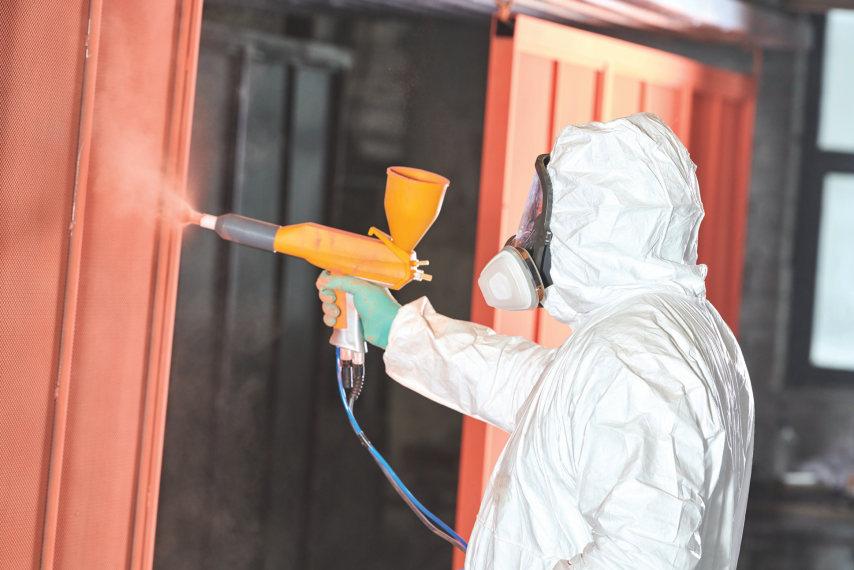
metal surfaces,” it noted.
However, specialist paints and coatings serve many other functions too, from protection against fire risk to the daily battle against the weather, whether that’s the harsh, desert sun of the Sahara or the cold, deep waters of the Atlantic.
The likes of Jotun and the other peer innovators have pioneered new coatings options for oil and gas operators, providing ever greater choice from the original first-generation materials in the 1940s, such as coal tar enamel and asphalt (bitumen), widely used for onshore pipelines.
Despite these advances, there remains no such thing as an ideal coating for all purposes, with the optimal choice dependent on a wide range of factors.
All are being tested fully as Africa’s oil and gas industry expands and evolves.
To boost coverage across Southern Africa, Canusa-CPS and Dhatec this year extended a partnership pact with Steel Pipe Industries (Pty) Ltd (SPI) that will strengthen their presence across South Africa, Mozambique, Botswana and Zambia.
SPI focuses on all aspects of field joint coating, rehabilitation, pipeline preservation and pipe logistics.
With multiple large-scale oil and gas projects planned or underway — from Ghana to Mozambique — the continent would seem a ready and receptive market for more coatings solutions.
HOW INDUSTRIAL IOT IS FUELLING THE DIGITAL OILFIELD TRANSFORMATION
The implementation of IoT and machine learning technology can take on 80% of tasks executed on modern well sites, and thus man-hours and department hand-offs are significantly reduced.
TECHNOLOGY HAS TRANSFORMED the oil and gas sector: prices are lower, expectations are higher and the competition is fiercer than ever. To successfully navigate this industrial evolution, energy operators in Africa must invest in innovation so that they can take advantage of the transition to digital. By keeping up with the rapid modernisation, operators can deliver a service which benefits them, their customers, and the environments in which they operate.
As the Internet of Things (IoT) begins to transform industries all over the world, having a network that can cope with the huge influx of data from connected devices and systems has become paramount to maximising productivity and profit. The alternative is inefficiency and, at worst, errors which could cost producers a significant amount of time and money. More devices and more connections mean more opportunity for cybercriminals, too. Therefore, protecting the increased volume of data being stored within and transmitted between interfaces is crucial to protecting return on investment (ROI), productivity and security.
Enabling remote management of devices and equipment On an industrial scale, IoT
Speedcast aims to provide 24/7 IT support to oil and gas assets and energy base camps.
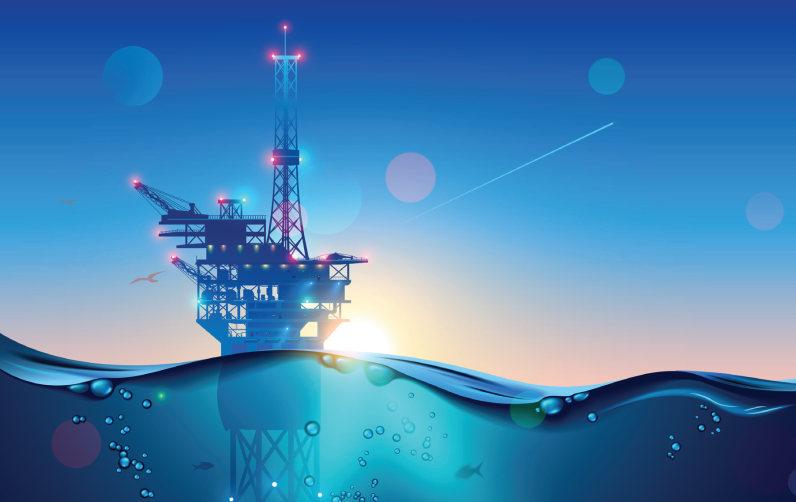
solutions enable remote management of devices and equipment, pipeline monitoring and real-time defect detection, allowing early interventions in malfunction scenarios including pipeline leakage, gas bottlenecks and safety breaches. Algorithms can also generate automated recommendations for well placement in the construction of oil rigs via subsurface planning, saving on costs and environmental damage. By optimising productivity, the protecting crew and preserving the surrounding environment, producers can make betterinformed operational decisions from the ground up, facilitating a stronger market position.
Having focused on expansion across Africa over the past decade, Speedcast is committed to providing technology, equipment and fully-managed networks to sub-Saharan regions and beyond. Last year, Speedcast initiated its sixth project in Mozambique, working to deliver a wide range of fully managed services and 24/7 IT support to offshore assets and energy base camps. With offices and teleports across the continent, it has worked closely with local economies to operate in accordance with the region’s unique challenges and priorities.
By making the investment in fully-managed value-added solutions to cater to the needs of the customer, producers can remain competitive in today’s volatile market. Offering solutions which remain resilient in harsh environments and are compatible with existing systems, Speedcast facilitates a seamless transition without causing operational disruption.

